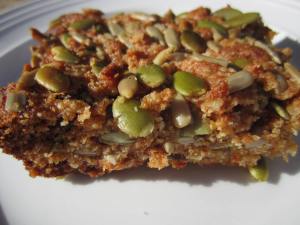Contrary to popular belief, fats are good for you. They are not only good for you, they are an essential component of your diet. Fats protect vital organs and hold them in place. In addition, they are necessary for the absorption of the fat-soluble vitamins; A,D,E and K.
Here is a list of healthy fats to incorporate into your diet:
- Nuts
- Seeds
- Avocado
- Fat from quality animal products: cheese, butter, milk, yogurt, eggs, omega-3 fats from salmon, fish-oil and cod-liver oil
- Healthy cooking oils (see list below)
In order to understand the difference between a healthy fat and an unhealthy fat, it is important to understand factors that can ruin a fat molecule. Namely, heat, air and/or light. For this reason, it is best to store fats in a sealed container either in your refrigerator or in a dark space that is at or below room temperature.
Fat that is found in packaged food products has been exposed to extreme heat temperatures thus, making it very dangerous to consume. Consuming damaged fat molecules is very dangerous for one’s health because the body is unable to identify the fat molecule. A great example is the result of filling up your car with vegetable oil instead of gasoline. You are bound to experience some complications and your car won’t function the way it is supposed to.
Many health problems can be related to excessive and poor-quality fat intake including heart disease and cancer. Traditional fats that were used for cooking provided health benefits whereas fats that are used today in packaged products lead to health diseases.
Cooking oils: Oil is the liquid form of fat. The healthiest fats to cook with are solid at room temperature. These include:
- Coconut oil
- Butter or ghee (clarified butter)
- Palm oil
- Tea seed oil
- Sesame oil: okay to use for stir-fry
It is best to use olive oil as a dressing or a finishing oil rather than a cooking oil.
Vegetable oils such as canola oil and sunflower oil are low quality oils that are best to avoid.
Remember, education is powerful. Resources to learn more:
- Fats the Heal Fats that Kill by Udo Erasmus
- Nourishing Traditions by Sally Fallon
- Healing with Whole Foods by Paul Pitchford
- Research by Weston A Price Foundation: http://www.westonaprice.org/
Got any questions? Please comment!


